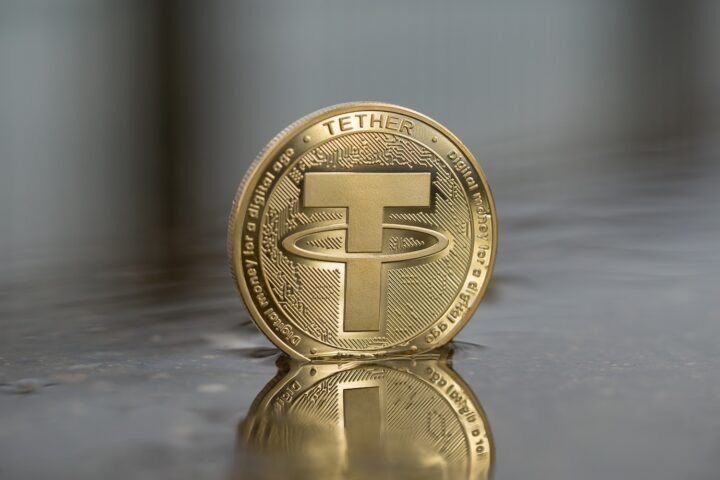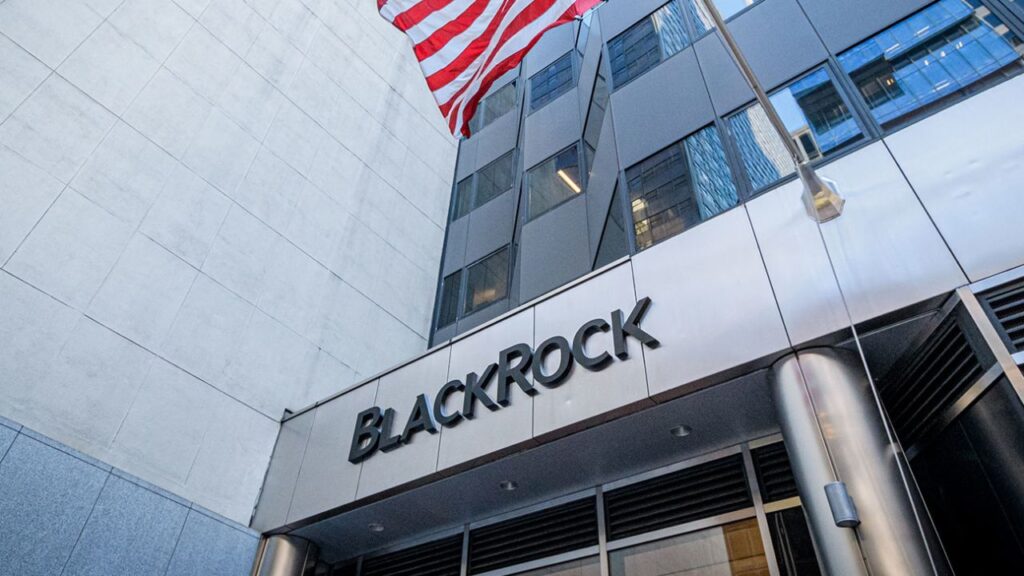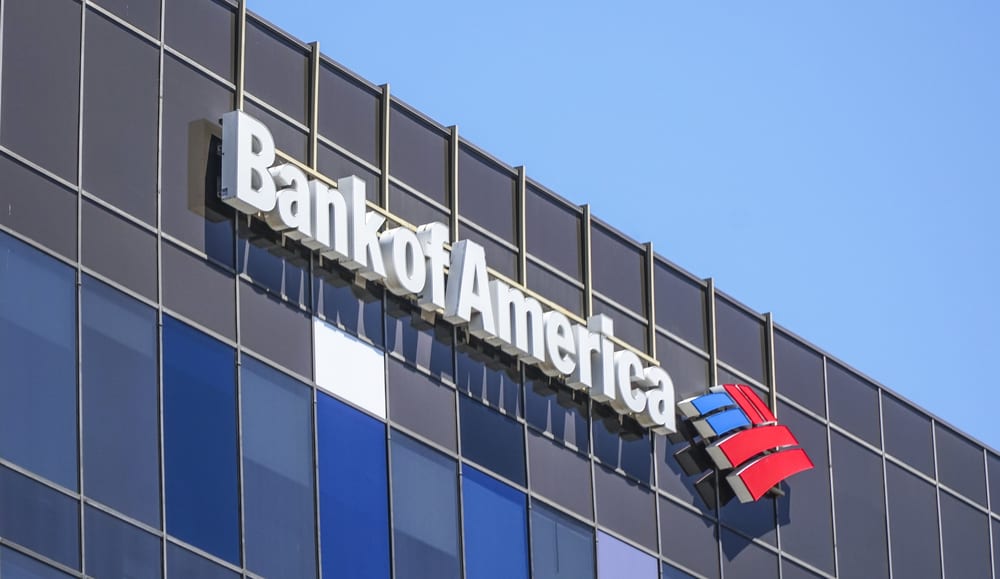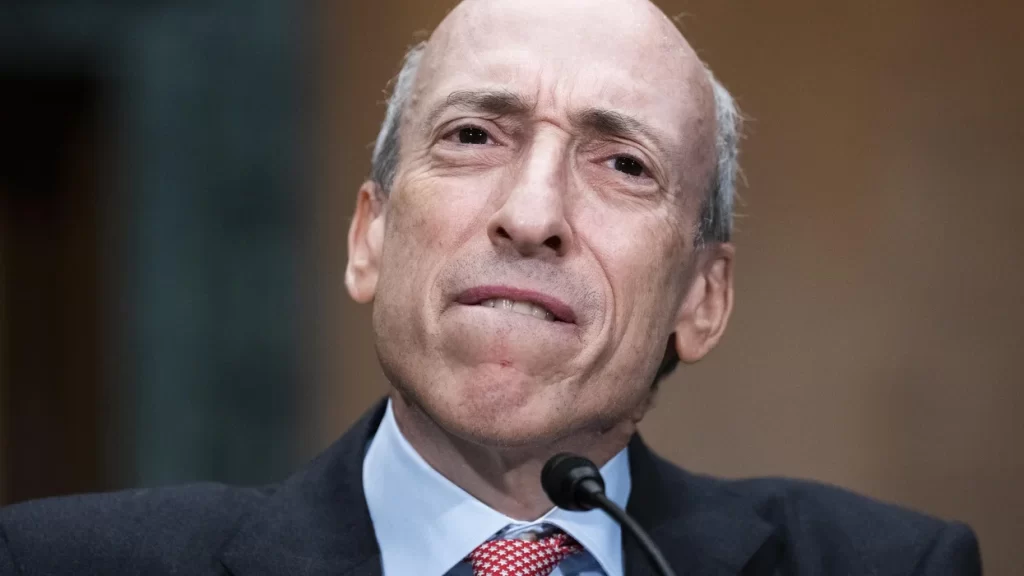A group of crypto and blockchain advocates has published a report urging the Hong Kong government to introduce a stablecoin linked to the Hong Kong dollar, aiming to challenge the dominance of Tether and USD Coin.
The report, co-authored by prominent individuals in the financial innovation field, proposes the issuance of an HKDG (Hong Kong Dollar Government) stablecoin to bolster the government’s efforts in the digital economy.
The authors, including Wang Yang from the Hong Kong University of Science and Technology, Cai Wensheng, the founder of Meitu, Lei Zhibin, an honorary chair of the Hong Kong Blockchain Association, and doctoral student Wen Yizhou, argue that issuing a stablecoin pegged to the Hong Kong dollar would solidify the region’s leadership in the blockchain sector.
READ MORE: Co-Founders of Collapsed Three Arrows Capital Pledge Donation to Creditors
They believe it would enhance transaction efficiency, reduce costs, improve payment systems, and strengthen Hong Kong’s fintech capabilities.
Additionally, they assert that a Hong Kong Dollar stablecoin would increase the efficiency and inclusiveness of the financial system, provide stability, security, and cross-border liquidity, supporting a broader range of financial innovations.
The authors criticize the government’s current strategy of encouraging private institutions to issue stablecoins pegged to the Hong Kong dollar as “too conservative” in comparison to its crypto and blockchain promotion goals.
The report highlights that Hong Kong’s foreign exchange reserves in March 2023 amounted to approximately $430 billion, surpassing the combined market capitalization of Tether and USD Coin, which stood at around $120 billion.
The proposed HKDG, backed by the government, is deemed to possess higher credibility and lower risk compared to existing stablecoins, particularly given concerns about the credibility of Tether and recent discounts experienced by USD Coin.
The authors outline several potential benefits of launching HKDG, including challenging the dominance of the US dollar, providing additional liquidity for government projects, and facilitating risk assessment by officials.
However, the report acknowledges potential risks, such as legal and regulatory challenges, international disputes related to illicit funding, and hacking incidents.
In June, the Hong Kong government established a task force to oversee the development of Web3.
The region has seen growing interest from over 80 digital asset and blockchain-related companies considering establishing a presence in Hong Kong, in addition to the already existing 800 fintech companies.
Overall, the report recommends the issuance of an HKDG stablecoin by the Hong Kong government to propel the region’s digital economy, enhance financial systems, and bolster its position as a leader in the blockchain sector.
Jinan, the capital city of China’s Shandong Province, has taken a significant step towards the widespread adoption of the country’s central bank digital currency (CBDC).
The city has introduced digital yuan payments on all its bus routes, encouraging residents to embrace this new payment method.
Initially, the city conducted a pilot program on two bus lines to test the feasibility of CBDC payments. Following the successful trial, Jinan has now implemented the digital yuan payment system across its entire bus network.
Local media outlet Shunwang-Jinan Daily reported that the city has upgraded its card readers and bus route software to accommodate the CBDC payments.
READ MORE: NFT Blue Chip Collections Plummet to Near Two-Year Lows
To incentivize the use of the digital yuan, Jinan is offering fare discounts to passengers who opt for this payment method.
According to the announcement, passengers can enjoy up to two discounted rides per day and a maximum of six discounted rides per month when using the digital yuan.
This initiative in Jinan is part of a broader nationwide effort to promote the adoption of the digital yuan in China.
Another city, Changshu, recently announced that it would pay civil servant salaries with the CBDC starting from May. This move extends to personnel at all levels of public service, public institutions, and state-owned units.
In addition to bus rides and civil servant salaries, China has implemented its CBDC for the Belt and Road initiative and cross-border trades.
On April 24, the city of Xuzhou issued a plan to promote the use of the CBDC in cross-border trade. Xuzhou serves as a departure point for trains transporting goods to Europe.
In a related development, BNP Paribas, a French bank, has partnered with the Bank of China (BOC) to encourage the use of the digital yuan.
Through this collaboration, BNP Paribas’ corporate clients will have the opportunity to connect with BOC’s system, facilitating real-time transactions using the digital yuan.
The introduction of digital yuan payments on Jinan’s bus routes represents a significant milestone in the promotion of China’s CBDC.
By integrating the digital currency into everyday transactions and expanding its use across various sectors, China is steadily advancing towards a digital economy.
Ethereum is showing a strong upward momentum as its price surges past $1,940 against the US Dollar.
The cryptocurrency has the potential to continue its upward trajectory if it manages to surpass the crucial resistance zone at $2,000.
Currently, Ethereum is steadily moving closer to the $2,000 zone, trading above $1,920 and the 100-hourly Simple Moving Average.
On the hourly chart of ETH/USD, there is a bullish trend line forming, indicating support near $1,945.
If the resistance at $2,000 is successfully breached in the near future, Ethereum could experience a surge of 5% to 8%.
Ethereum’s price recently found a base above the $1,850 support level and initiated a fresh upward movement, outperforming Bitcoin.
READ MORE: EU Lawmakers Approve Controversial Law Despite Crypto Concerns
It surpassed the $1,950 resistance zone, reaching a new multi-day high at $1,975 before consolidating its gains. Although there was a slight decline below $1,965, the price managed to find support.
The immediate resistance for Ethereum is currently near $1,975, followed by a major resistance level at $2,000. A close above $2,000 could potentially trigger a renewed surge, with the next resistance level around $2,050.
Further upward gains could propel the price towards the $2,120 mark, and even higher to the $2,200 resistance level.
However, if Ethereum fails to surpass the $1,975 or $2,000 resistance levels, a downside correction might occur.
In such a scenario, initial support can be found around the $1,950 level and the trend line zone.
The next significant support level lies near $1,930, which aligns with the 50% Fibonacci retracement level of the recent upward movement.
Additionally, the 100-hourly Simple Moving Average also provides support at this level.
Further downward movement could lead to a drop towards the $1,900 mark, and if the bearish sentiment persists, Ethereum may find support around $1,880.
As Ethereum continues to display positive price action, investors are closely watching its performance and assessing the potential for further gains.
The Law Commission of the United Kingdom is advocating for the establishment of a unique category of personal property that caters to the distinct characteristics of cryptocurrencies and digital assets.
In response to a directive from the British government, the commission conducted a comprehensive analysis of common law frameworks in England and Wales to determine how they can effectively accommodate digital assets, including non-fungible tokens (NFTs) and cryptocurrencies.
The most notable recommendation put forth by the commission is the creation of a fresh and distinct category of personal property specifically for digital assets.
The commission intentionally refrained from defining clear boundaries for this proposed category, asserting that the determination of which digital assets fall within this framework should be left to the discretion of the U.K.’s common law system.
According to a statement released by the commission and shared with Cointelegraph, the introduction of a new personal property category would enable a nuanced approach to recognizing a broad spectrum of digital assets, ranging from cryptocurrencies to digitized instruments like carbon emission credits or export quotas.
READ MORE: NFT Blue Chip Collections Plummet to Near Two-Year Lows
In addition to this, the Law Commission proposed the establishment of a panel consisting of industry-specific technical experts, legal practitioners, academics, and judges.
This panel would be responsible for providing non-binding advice to courts regarding various legal issues and considerations pertaining to the digital asset sector.
Another key recommendation put forth by the commission is the development of a tailored legal framework aimed at facilitating the operation and enforcement of collateral arrangements.
Lastly, the commission called for statutory law reforms that would provide clarity on whether specific digital assets fall under the purview of the U.K.’s Financial Collateral Arrangements Regulations of 2003.
The Law Commission’s review of the legal challenges associated with the cryptocurrency sector commenced in October 2022 at the request of the Ministry of Justice.
Subsequently, in March 2023, the U.K. Treasury and Home Office announced their intentions to implement robust regulations on the cryptocurrency sector to combat its potential misuse for criminal activities.
Asset management giant BlackRock’s recent filing for a Bitcoin exchange-traded fund (ETF) has taken an interesting turn with the inclusion of a “surveillance-sharing agreement” with Coinbase, a leading cryptocurrency exchange.
The filing, made on June 29 with the United States Securities and Exchange Commission (SEC), requested a rule change to allow the listing of BlackRock’s Bitcoin ETF on the Nasdaq stock exchange.
The document revealed that a June 8 agreement between Nasdaq and Coinbase was designed to enhance the exchange’s market surveillance program and grant access to data on spot Bitcoin trades.
READ MORE: NFT Blue Chip Collections Plummet to Near Two-Year Lows
This announcement followed ARK Investment Management’s amendment to its own spot Bitcoin ETF application, which incorporated a surveillance-sharing agreement with the Chicago Board Options Exchange (Cboe) and an undisclosed U.S.-based crypto exchange.
Speculation arose that the agreement was with Coinbase, potentially conflicting with BlackRock’s ETF application.
On June 30, the SEC reportedly stated that the crypto ETF filings with Nasdaq and Cboe were insufficiently clear and comprehensive, urging the applicants to provide additional information on surveillance arrangements.
It is worth noting that BlackRock initially submitted its application for the spot Bitcoin ETF on June 15.
Despite several market participants submitting ETF applications linked to cryptocurrency investments, the SEC has yet to approve any spot ETF related to crypto.
In response to the denial of its spot Bitcoin ETF in June 2022, Grayscale Investments filed a lawsuit against the SEC, accusing the regulator of applying inconsistent treatment to similar investment vehicles.
The inclusion of surveillance-sharing agreements in these recent ETF filings reflects a growing emphasis on market surveillance and investor protection.
Regulators are keen to ensure that proper monitoring mechanisms are in place to prevent market manipulation and illicit activities within the crypto space.
By partnering with trusted cryptocurrency exchanges like Coinbase, BlackRock and ARK Investment Management aim to address the SEC’s concerns and provide a transparent and secure environment for investors looking to access Bitcoin through regulated investment vehicles.
As the SEC continues its evaluation of the latest ETF filings, the crypto industry eagerly awaits a breakthrough in the approval of a spot Bitcoin ETF, which could potentially open up new avenues for institutional and retail investors to participate in the crypto market.
In the dynamic landscape of decentralized finance (DeFi), innovation and adaptability are key. As businesses and individuals alike seek to navigate this new frontier, they require robust, secure, and user-friendly tools to facilitate their journey. One company that stands at the forefront of this revolution, providing the infrastructure necessary for businesses to thrive in this new era of finance, is AllianceBlock.
Pioneering Decentralized Tokenized Markets
Since its inception, AllianceBlock has been a trailblazer in the world of DeFi, building an end-to-end infrastructure for decentralized tokenized markets. This innovative platform empowers businesses of all sizes to tokenize assets and compliantly issue, manage, and trade in an inclusive financial ecosystem. AllianceBlock’s services include a trustless KYC/AML module, a holistic DeFi Terminal, a trustless identity verification system, etc.
Moreover, the platform features a Data Tunnel, a compliant peer-to-peer (P2P) funding system, full regulatory compliance for cross-border transactions, and a DEX & Bridge, offering various functionalities.
The platform offers easy setup and integration, allowing businesses to start quickly with off-the-shelf solutions or seamlessly integrate with development kits to accelerate their objectives. Moreover, AllianceBlock’s technology is secure, decentralized, and compliant by design, making it a reliable choice for businesses venturing into the DeFi space. To ensure compliance with global financial regulations, AllianceBlock has implemented the Prometheus Protocol, a multi-layered architecture that facilitates capital transfer across borders in a legally compliant and regulated manner.
The Evolution of Brillion: A Case Study in Growth
One of the most exciting developments in AllianceBlock’s journey in the recent past has been its partnership with Brillion, a self-custodial wallet aiming to bridge billions of users to the future of finance. Brillion, which started as dua Pay — a remittance and cross-border payments solution — has evolved into a much larger brand aiming to facilitate the financial inclusion of billions of people.
AllianceBlock’s technology has been instrumental in this transformation, providing solutions for cross-border activity, regulating token issuance, offering compliant DeFi solutions, fund distribution, and regulating digitized derivatives, among others.
Brillion’s mission is to help billions of people bridge into web3 with the right tools that help them navigate the ecosystem with full control of their assets, identity, and data.
The wallet supports multiple networks and offers novel recovery features via connected credentials such as social media accounts and emails. It also provides identity management and verification in-app (KYC), ensuring that users are in control of their data, how much they share, and whom they share it with.
AllianceBlock and Brillion: A Strategic Partnership
From the getgo, AllianceBlock’s suite of products has been instrumental in Brillion’s evolution. The partnership began in 2022 when Brillion used AllianceBlock’s technology to develop a wallet for its large user base. The collaboration has opened doors to new opportunities outside of Brillion’s user base, resulting in new ideas and solutions that exceeded the limits of a single wallet and clientele.
AllianceBlock’s product lineup, including its aforementioned DeFi Terminal, the Fundrs app, and its fully functional DEX, has played a significant role in this collaboration. The DeFi Terminal allows users to participate in liquidity mining and staking, offering rewards for their participation. The Fundrs app is a decentralized crowdsourcing platform that enables capital seekers and providers to collaborate from the early stages of project development. The AllianceBlock DEX, on the other hand, offers a peer-to-peer marketplace where users can swap tokens without using an intermediary.
Furthermore, to enhance the interoperability of different blockchain networks, AllianceBlock recently launched AllianceBridge, a decentralized solution that enables communication between disparate blockchain networks to achieve various economic goals.
🌟 Meet our official wallet @BrillionFi: A prime example of growth within our ecosystem! We empower companies to build on our robust infrastructure, we guide them through the crypto space's challenges, helping them unlock their full potential & fuel their growth and success $NXRA https://t.co/hSSeHuZLER
— AllianceBlock (@allianceblock) June 18, 2023
Looking Ahead
In conclusion, AllianceBlock has proven to be a significant player in the DeFi space, providing a range of solutions that cater to the needs of both businesses and individuals. It has set an example of how blockchain technology can be leveraged to foster financial inclusion and create a more equitable financial system. With continued innovation and a commitment to user-centric design, AllianceBlock is poised to shape the future of decentralized finance.
European Union (EU) lawmakers have given the green light to the contentious European Data Act, despite prior criticism from the crypto community.
The act aims to promote the utilization of data resources for algorithm training and proposes updates to the EU’s smart contract regulations, including the introduction of a kill switch option for secure termination.
This move, however, has sparked concerns as it contradicts the fundamental principle of trust in smart contracts.
Simultaneously, the European Commission has presented a legislative plan for the digital euro, with the goal of establishing it as a widely accepted and easily accessible payment method.
The proposal emphasizes that individuals will have the ability to obtain digital euros through their banks upon request, ensuring convenient access and preventing exclusion.
The plan also incorporates provisions for free basic digital euro services, privacy protection, and offline payments.
Despite these developments, the crypto landscape in Europe does hold some positive news, particularly at the local level.
For instance, the National Council of Slovakia has passed an amendment to reduce personal income tax on profits derived from the sale of cryptocurrencies held for a minimum of one year.
The tax rate will be lowered to 7%, a significant decrease from the existing sliding scale of 19% or 25%.
Additionally, payments received in cryptocurrencies up to 2,400 euros ($2,600) will be exempt from taxation.
In the ongoing legal dispute between Coinbase, a major American cryptocurrency exchange, and the United States Securities and Exchange Commission (SEC), Coinbase has submitted a motion seeking the dismissal of the SEC’s complaint.
In a legal document filed with the United States District Court for the Southern District of New York, Coinbase raises concerns regarding the SEC’s interpretation of securities laws, suggesting that the agency has exceeded its legal authority.
Coinbase’s motion asserts that the SEC’s actions represent an extraordinary abuse of process. The exchange argues that the SEC’s attempt to regulate cryptocurrencies as securities goes beyond its purview and disregards the decentralized nature of these digital assets.
Coinbase contends that the SEC’s actions lack legal basis and have a chilling effect on innovation and competition in the cryptocurrency industry.
The outcome of this legal battle will undoubtedly have significant implications for the regulatory landscape surrounding cryptocurrencies in the United States, as well as potential ripple effects globally.
The case highlights the ongoing struggle between regulators and cryptocurrency platforms seeking clearer guidelines and a balanced approach to foster innovation while ensuring investor protection.
Other Stories:
Binance’s Reversal on Delisting Privacy Coins Marks a Major Win for Privacy Advocates
Bittrex Copies Coinbase As It Challenges SEC’s Authority in Legal Dispute
Bank of America has released a research report highlighting the transformative potential of tokenization in the next five to 15 years.
Tokenization, which involves converting real-world assets into digital tokens on a blockchain network, could revolutionize financial and non-financial infrastructure, according to the report.
The report emphasizes the wide-ranging implications of tokenization across various sectors.
BofA’s Cryptocurrencies Research Team believes that the adoption of tokenization will redefine value transfer, settlement, and storage in all industries, leading to a transformative infrastructure revolution.
Tokenization has the potential to reshape asset management and trading over the next decade, offering increased efficiency, liquidity, and reduced transaction costs.
By representing assets as tokens on a blockchain, traditional complexities associated with intermediaries and paperwork can be minimized, enabling faster and more efficient transactions.
Bank of America suggests that the mainstream adoption of digital assets through blockchain technology will occur much faster than previous disruptive technologies like radio, television, and email.
The bank predicts rapid momentum among financial institutions and corporations in implementing blockchain technology due to the untapped efficiencies it offers.
The report clarifies that distributed ledger technology and tokenized traditional assets should not be confused with cryptocurrencies.
While blockchains record the ownership of the thousands of tokens in the digital asset ecosystem, BofA expects most of the current tokens to disappear within the next ten years.
The report explores various applications of tokenization in the digital realm, acknowledging that some tokens lack inherent value but can attract attention by representing a community’s value.
It provides examples such as memecoins like Shiba Inu (SHIB) and Pepecoin (PEPE) that gained significant attention despite their lack of utility.
However, the report recognizes that other tokens serve distinct purposes.
Furthermore, the report highlights the importance of certain digital assets, even if they lack intrinsic value, due to the emergence of public permissionless blockchains like Bitcoin and Ethereum.
These decentralized networks require tokens as incentives for participants involved in processing transactions within the network.
In conclusion, Bank of America’s research report emphasizes the transformative role of tokenization in finance and beyond.
Tokenization has the potential to revolutionize asset management, enhance efficiency, increase liquidity, and reduce transaction costs.
The report anticipates rapid adoption of digital assets and blockchain technology, driven by the efficiency gains they offer.
Other Stories:
Cboe Resubmits Bitcoin ETF Application With Fidelity, Collaborates with Coinbase
Shiba Inu Twitter Scam Exposed By ‘Shibarmy Scam Alerts’
U.S. Federal Reserve Certifies 57 Companies to Utilize ‘FedNow’ Instant Payments System
Privacy advocates achieved a significant victory in June as Binance announced its reversal on delisting privacy coins for users in several European countries.
This decision means that traders in Italy, Poland, Spain, and France can continue trading privacy coins such as Zcash, Secret, Firo, Navcoin, MobileCoin, Beam, and PIVX.
The potential ban on these coins would have been a grave mistake.
Privacy coins provide individuals with enhanced transactional security, countering financial surveillance, and safeguarding user confidentiality.
In an era plagued by excessive surveillance and a lack of privacy, the significance of these coins cannot be overstated.
Privacy coins possess fungibility, making each unit interchangeable and resistant to censorship, which sets them apart from most other cryptocurrencies.
Losing these additional layers of security and anonymity would have been a considerable loss for the crypto community.
The increasing adoption of privacy coins in recent years is a response to stringent regulations.
Binance’s decision aligns with the European Union’s efforts to establish standards for digital assets through the Markets in Crypto-Assets (MiCA) regulations.
As the European Securities and Markets Authority prepares to launch a MiCA consultation process in July, it is evident that Europe continues to shape the regulatory landscape for the crypto industry.
It is essential to recognize that privacy is a fundamental human right protected by the United Nations.
Article 12 of the Universal Declaration of Human Rights emphasizes the right to privacy and protection against interference.
This right should extend to the world of cryptocurrencies as well.
In the digital age, the need for privacy becomes even more critical as data exploitation risks escalate, and tech giants strive to control private information.
Binance’s decision reflects the delicate balance exchanges must maintain between regulatory compliance and users’ privacy needs, considering the varying international regulations they face.
Looking to the future, Binance’s decision, along with the regulatory pressure in Europe, may lead to increased demand and development within the privacy coins sector.
Paradoxically, this precedent could encourage other exchanges to reconsider their stance on privacy coins, potentially leading to wider availability.
This news highlights the power of community sentiment in shaping crypto policies and regulations.
Binance’s official statement acknowledged the influence of community feedback in their decision-making process.
It is crucial to understand and harness the community’s power to shape the future of the crypto industry.
The crypto community must unite and continue advocating for privacy, as it forms the foundation of Web3. As the Romans said, “ibi semper est victoria ubi est concordia”: There is always victory where there is unity.
Other Stories:
Shiba Inu (SHIB) Price Prediction For 2023 & 2025
U.S. Federal Reserve Certifies 57 Companies to Utilize ‘FedNow’ Instant Payments System
Cboe Resubmits Bitcoin ETF Application With Fidelity, Collaborates with Coinbase
Rumors about the resignation of Gary Gensler, the chair of the United States Securities and Exchange Commission (SEC), have once again been circulating.
Interestingly, artificial intelligence seems to have played a role in spreading these false claims.
On July 1, an article appeared on a website called “thecryptoalert.com,” stating that Gary Gensler had resigned following an internal investigation, citing an anonymous official as the source.
However, further investigation by Cointelegraph revealed that the text of the article was generated by an AI model, as indicated by the high score of 96.8% on the AI-detector ZeroGPT.
Upon examining the website, it became apparent that it was relatively new, with only 17 posts in total, the earliest of which was published on June 22nd.
Most of these articles also exhibited signs of being generated by artificial intelligence, with ZeroGPT scoring them around 70%.
Furthermore, a search on the internet archive Wayback Machine revealed that the ownership of the website’s domain, “thecryptoalert.com,” was updated on June 24 at 4:30 PM.
Despite these indicators, several Twitter accounts reposted the content, with one particular post by the account @whalechart gaining significant traction, garnering 1.4 million views.
However, on July 3, Fox Business Network reporter Charles Gasparino confirmed through a tweet that Gary Gensler is not resigning, after allegedly reaching out to the SEC for clarification.
This is not the first time rumors about Gensler’s resignation have circulated. On April 20, questionable sources spread claims that he was about to be “fired.”
Then, on June 12, U.S. lawmakers introduced a bill known as the “SEC Stabilization Act” to the House of Representatives, which included a provision seeking to remove Gensler from his position, accusing him of being a “tyrannical Chairman.”
In conclusion, false rumors of Gary Gensler’s resignation as SEC chair have been circulating once again.
These rumors were propagated through an article generated by an AI model on a relatively new website.
However, it has been confirmed that Gensler is not resigning, and these rumors are reminiscent of previous attempts to undermine his position.












